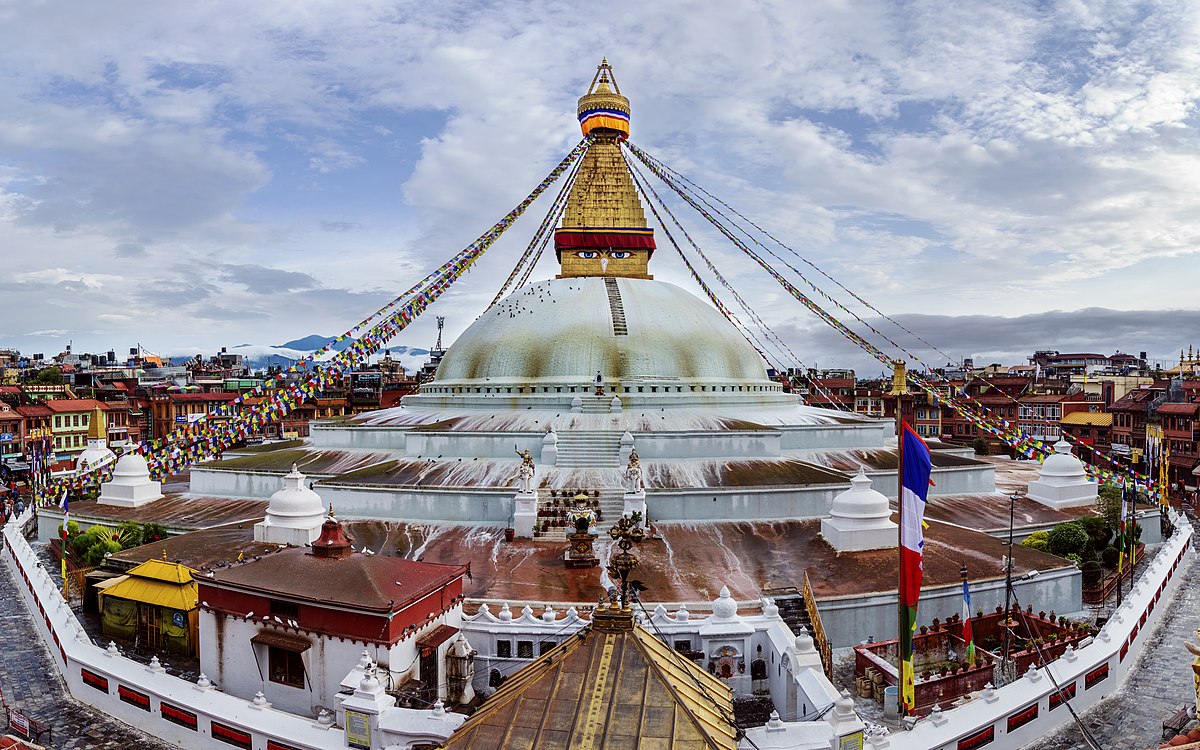Boudhanath Stupa, one of the largest and most significant stupas in Nepal, stands as a monumental icon of spiritual and cultural tourism. Situated approximately 11 kilometers from the heart of Kathmandu, this UNESCO World Heritage Site attracts thousands of visitors each year, seeking both solace and a deeper understanding of Tibetan Buddhism.
The stupa, believed to have been constructed in the 14th century after the Mughal invasions, is a crucial center for Tibetan Buddhism outside Tibet. Its massive mandala makes it one of the largest spherical stupas in Nepal and a focal point for Tibetan culture in the country. The whitewashed dome, with its gilded tower painted with the all-seeing eyes of the Buddha, symbolizes wisdom and compassion, drawing pilgrims and tourists alike.
For tourists, Boudhanath offers a unique blend of spirituality, history, and culture. The surrounding area is a vibrant hub of Tibetan life, with numerous monasteries, shops, and restaurants. Visitors can participate in daily rituals, spinning prayer wheels and offering butter lamps, or simply soak in the serene atmosphere while observing the devotion of local monks and nuns.
The stupa itself is surrounded by a circular marketplace where visitors can purchase traditional Tibetan artifacts, thangka paintings, and handicrafts. The rich aroma of incense, the sound of monks chanting, and the sight of colorful prayer flags fluttering in the wind create an immersive experience that appeals to the senses.
In recent years, Boudhanath has also become a center for mindfulness and wellness tourism. Various centers around the stupa offer meditation and yoga classes, attracting international tourists looking for inner peace and relaxation. The area’s tranquil environment and spiritual ambiance make it an ideal destination for those seeking a retreat from the hustle and bustle of everyday life.
Tourism in Boudhanath significantly contributes to the local economy. Many residents are engaged in the hospitality sector, offering homestays, guesthouses, and guided tours. The local cuisine, a fusion of Tibetan and Nepalese flavors, is another highlight, with eateries serving dishes like momos, thukpa, and butter tea.
The Boudhanath Stupa is not just a site of religious significance but a symbol of resilience and cultural heritage. Despite the devastating earthquake in 2015, which caused significant damage to the stupa, restoration efforts have successfully preserved its grandeur. The restoration, funded by both local and international contributions, stands as a testament to the global importance of this sacred site.
As Nepal continues to recover and rebuild, Boudhanath remains a beacon of hope and a must-visit destination for tourists worldwide. Its blend of spiritual significance, cultural richness, and welcoming community ensures that visitors leave with not just memories but a profound sense of connection and peace.
For those planning to visit Nepal, a trip to Boudhanath promises an unforgettable journey into the heart of Tibetan Buddhist culture, offering insights and experiences that resonate long after the visit is over.






